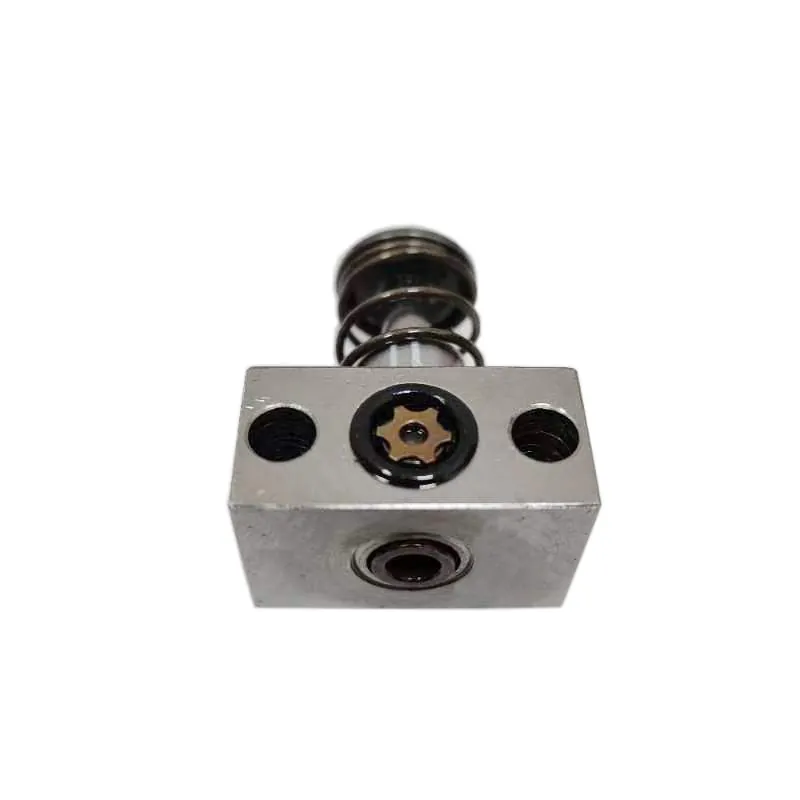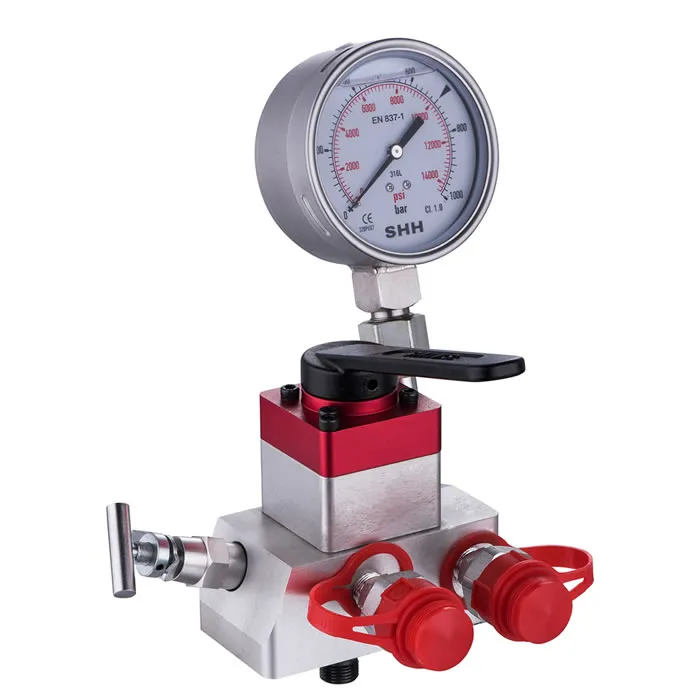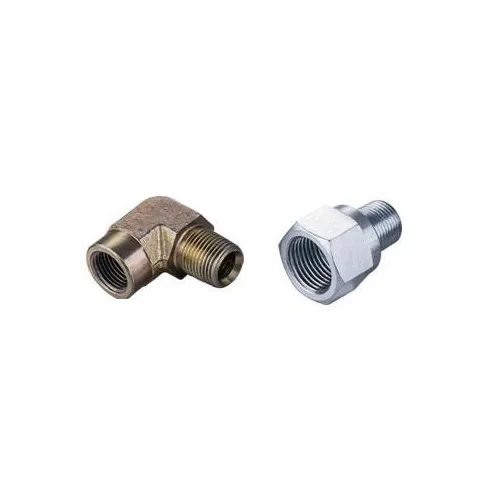From Symbol to Function: Decoding the Language of Hydraulic Schematics
I. Understanding Hydraulic Systems and Its Working Principle
A hydraulic system is a technological marvel that generates power by utilizing pressurized fluid.
The fundamental principle of a hydraulic system lies in Pascal's law, which states that when pressure is applied
to any part of a confined fluid, it is transmitted undiminished throughout the fluid.
The hydraulic system consists of an output shaft for transferring motion or force, a fluid tank serving as a reservoir for high-density,
incompressible oil, which is filtered before being pumped by a hydraulic pump. The pump delivers a constant volume in each revolution,
and a pressure regulator prevents excessive pressure by redirecting excess fluid to the tank.
The piston's movement is controlled by changing liquid flow through ports A and B, with a control valve directing fluid flow to control cylinder movement.
Leak-proof piping is crucial for safety and environmental reasons. Additional accessories like flow control systems, travel limit controls,
electric motor starters, and overload protection enhance the hydraulic system.
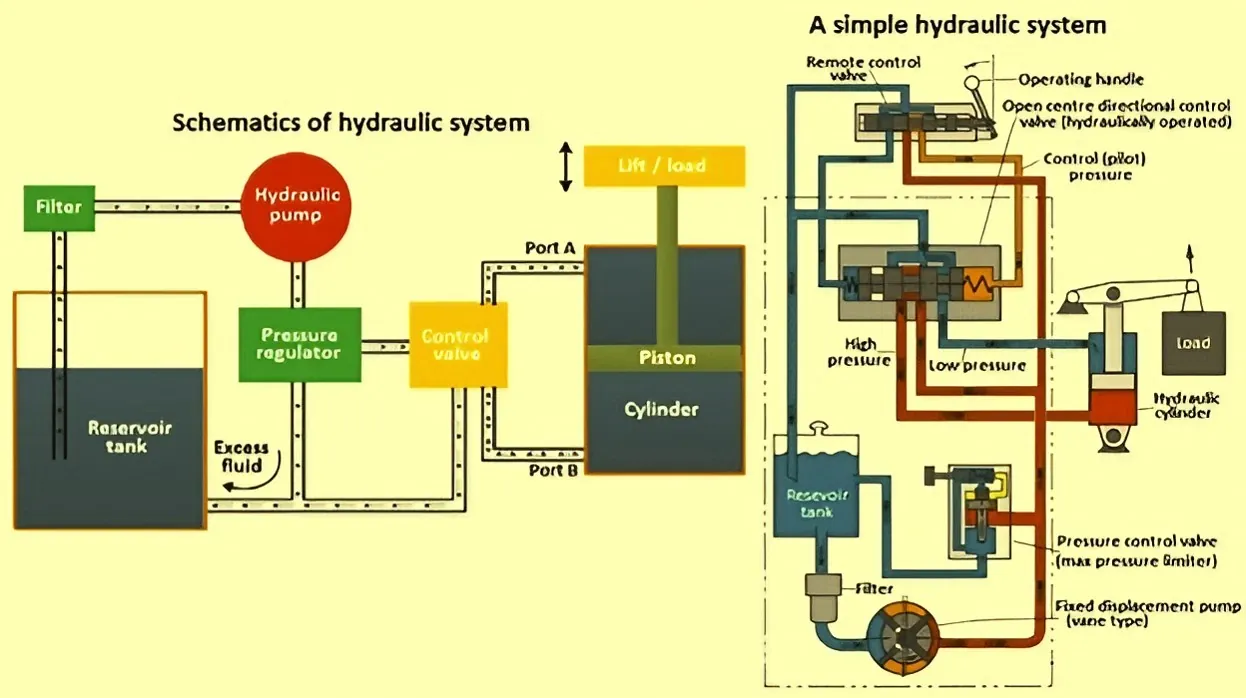
II. The advantages and disadvantages of hydraulic systems
Hydraulic systems offer numerous advantages. Their most notable benefit is power amplification – a small force applied at one
point can generate a significantly larger force at another point. Additionally, they provide constant force and torque,
smooth operation, and easy control of direction, speed, and force.
However, hydraulic systems also come with their setbacks. They may be prone to leakage, leading to efficiency loss and environmental pollution.
Moreover, they require regular maintenance to ensure optimal performance, which can be time-consuming and costly.
III. Exploring the Types of Hydraulic Systems: Open-Center and Closed-Center Systems
Hydraulic systems are generally categorized into two types: open-center and closed-center systems.
In an open-center system, the fluid flows freely through the control valves when the system is at rest.
This allows the pump to operate at a minimal load, reducing energy consumption. However, its performance can be affected by changes in the load.
Contrarily, in a closed-center system, the control valves are closed when the system is idle, blocking the fluid flow.
This type of system can maintain a consistent performance regardless of load changes, but it may consume more energy.
IV. Major Components of a Hydraulic System
Hydraulic Pump: Converts mechanical energy from a prime mover (e.g., electric motor) into hydraulic energy, pushing hydraulic fluid through the system.
Reservoir for Hydraulic Fluid: A tank that holds hydraulic fluid, acting as a supply for the system and providing space for fluid expansion, air release, and cooling.
Filter: Removes foreign particles and metal debris from the hydraulic oil, preventing contamination and ensuring the system's smooth operation.
Actuator: Receives pressure energy and converts it into mechanical force and motion. Actuators can be linear (e.g., cylinders) or rotary (e.g., hydraulic motors).
Accumulator: Stores hydraulic fluid under pressure, serving various purposes such as maintaining system pressure
during power failures and compensating for pressure loss due to leakage.
Directional Control Valve: Controls the distribution of energy in the fluid power system,
determining the direction of fluid flow and enabling start, stop, and changes in direction.
Flow Control Valve: Regulates the fluid flow rate, controlling the speed of actuators. It can decrease or increase fluid flow by adjusting the valve opening area.
Pressure Relief Valve: Protects Hydraulic Components from excessive pressure by limiting the system pressure within a specified range.
It opens when pressure exceeds the set limit, allowing fluid to return to the tank.
Pipes and Fittings: Connect various components of the hydraulic system.
Pipes, tubing, and flexible hoses are used based on the system's requirements for rigidity or flexibility.
V.Basic symbols representing hydraulic components
Pump: A triangle with an arrow pointing outwards. The direction of the arrow indicates the flow of the fluid.
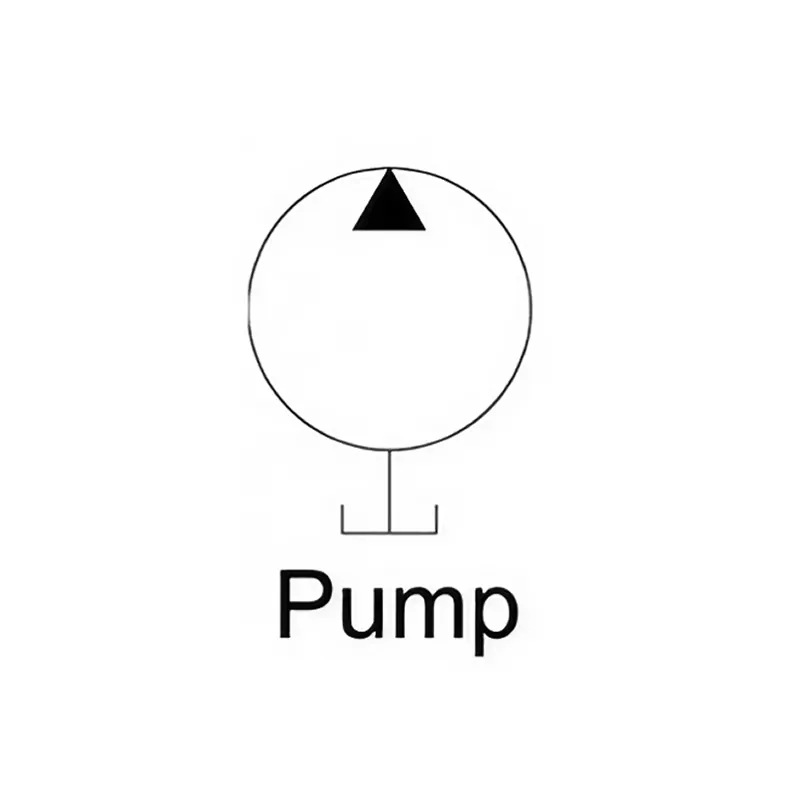
Reservoir: A rectangle with a wavy line at the top to represent the fluid level.
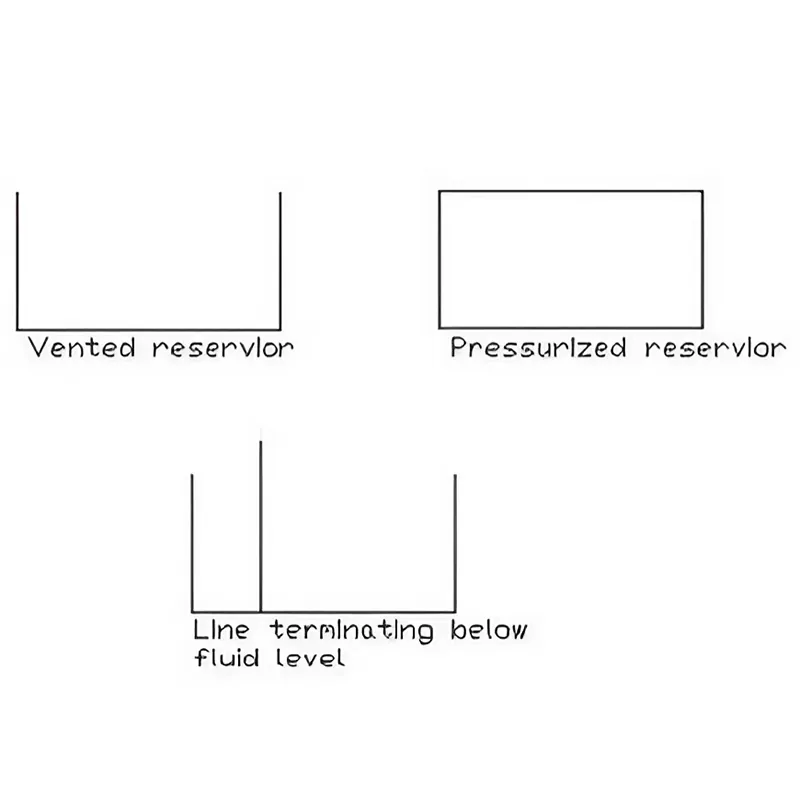
Filter: A triangle with a horizontal line across the middle.
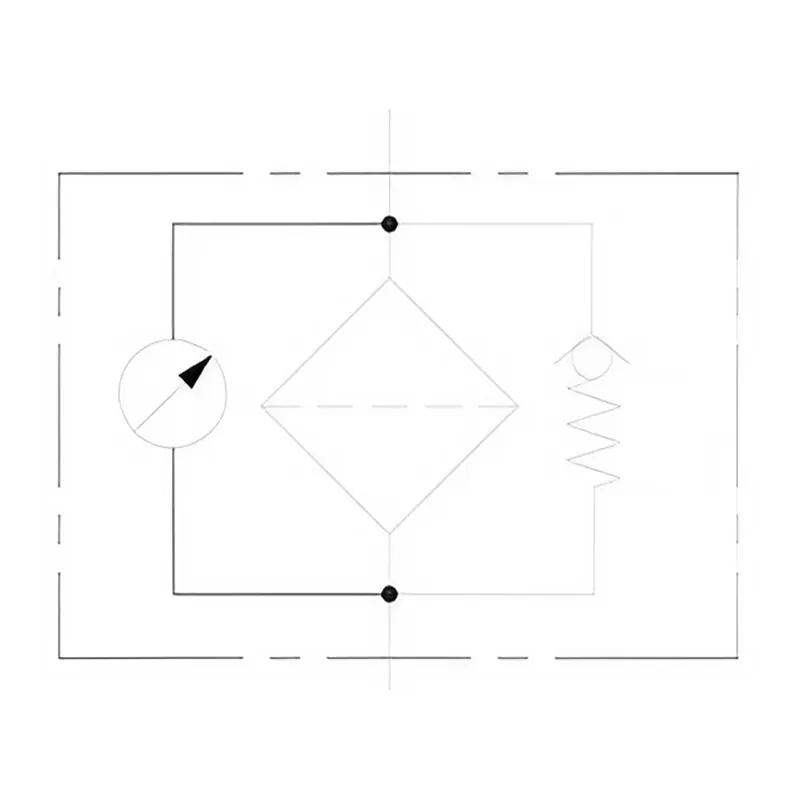
Actuator
Linear actuator (cylinder): A rectangle with a line on either side to represent the piston rod.
Rotary actuator (motor): A circle with an arrow inside.
Accumulator: A circle with a vertical line inside and a wavy line at the bottom.
Directional control valve: A square or rectangle with lines and arrows to indicate the flow paths and positions of the valve.
Flow control valve: A rectangle with a variable-width line inside to represent the adjustable flow path.
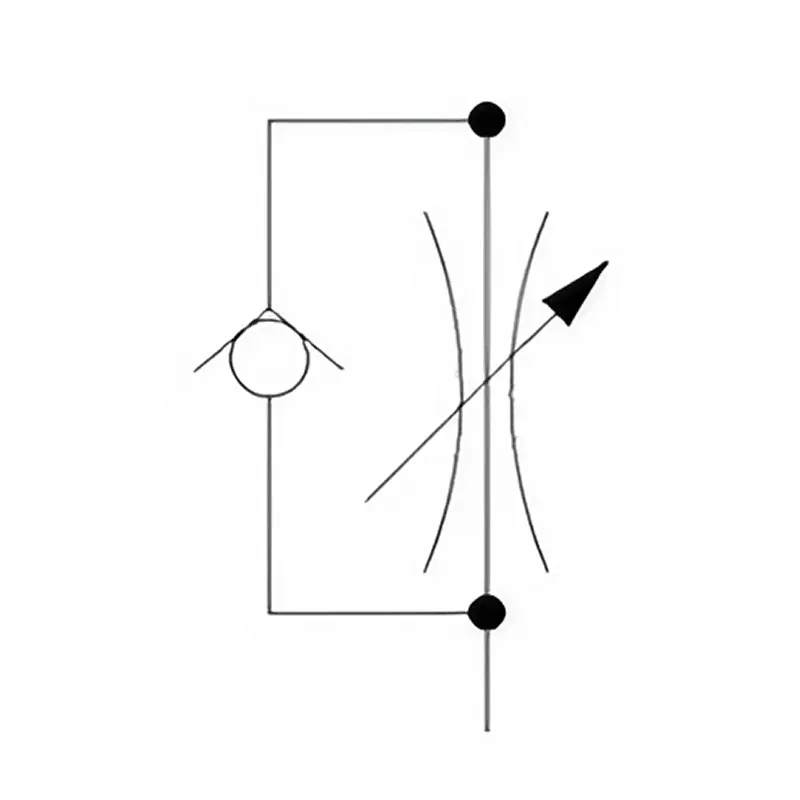
Pressure relief valve: A triangle with a vertical line inside and a spring symbol on top.
Pipes and fittings: Lines connecting the components. The type of line (solid, dashed, etc.) can indicate the type of pipe or fitting.
In conclusion, hydraulic systems play a crucial role in various industries, from construction to manufacturing.
Understanding their principles, advantages, types, and components can aid in their efficient use and maintenance.
Despite their drawbacks, the power and control they provide make them an invaluable tool in many applications.
Why Choose SAIVS™ as Your Supplier?
With 20 years of industry experience, SAIVS is a leading Chinese manufacturer of high-quality tools, offering competitive pricing and excellent customer service.We pride ourselves on exceptional quality control, extensive experience, and comprehensive after-sales service.
